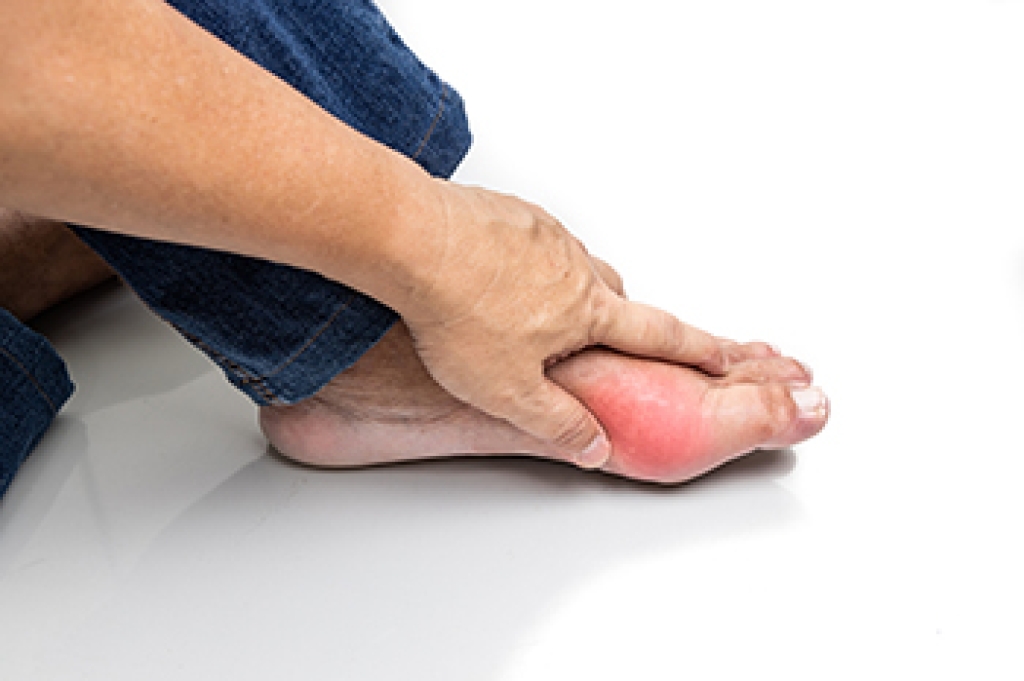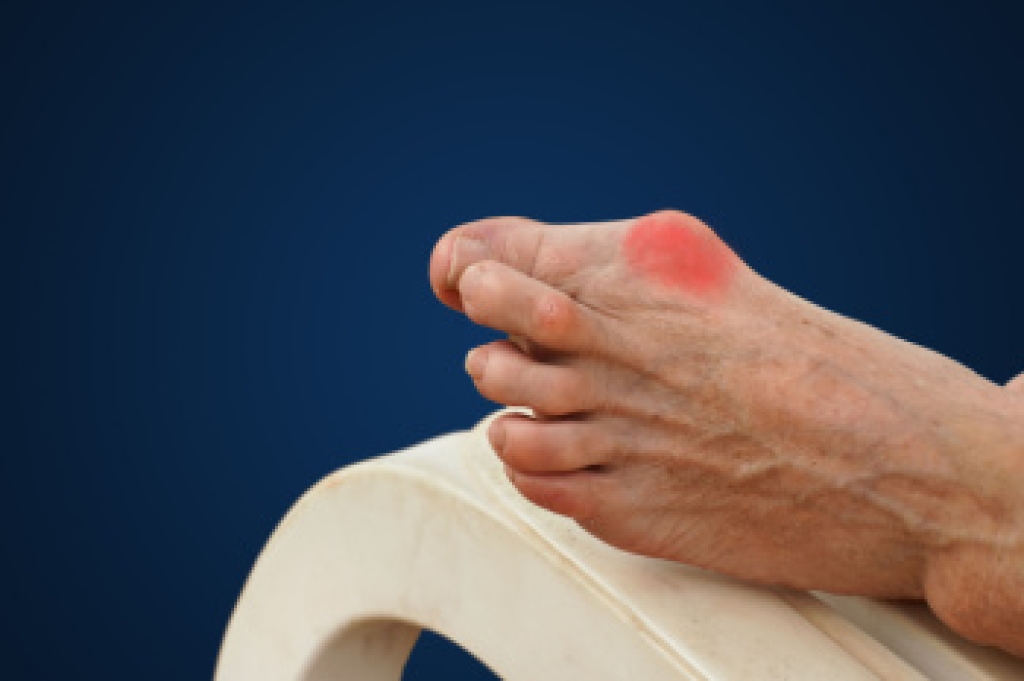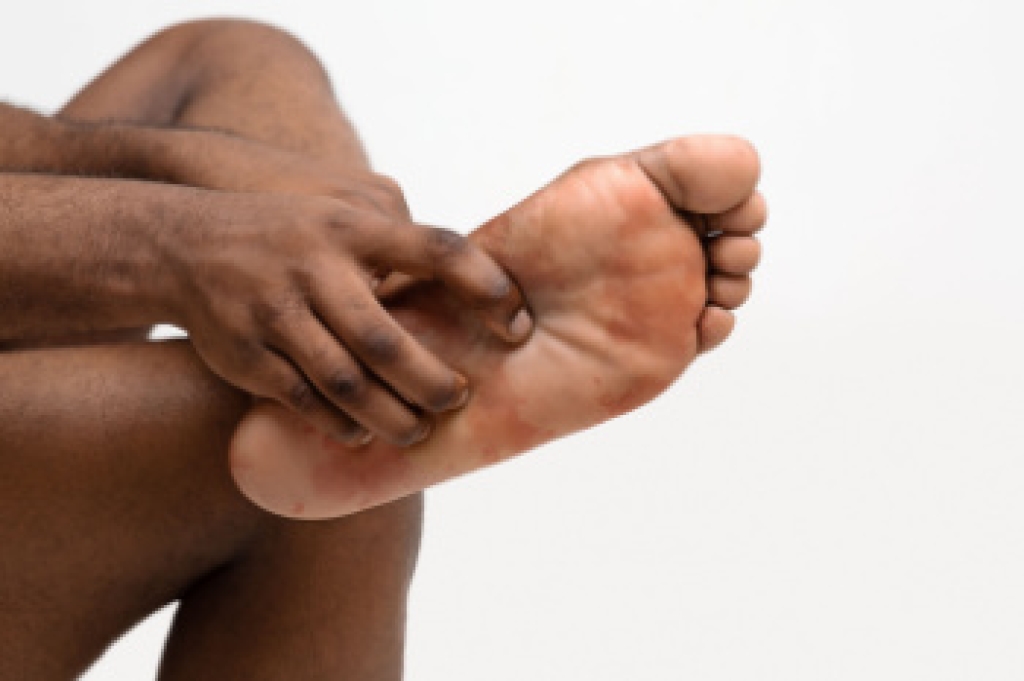
Gout is caused by an excess buildup of uric acid in the body, leading to the formation of sharp, needle-like crystals in the joints. Gout often affects the joint at the base of the big toe, resulting in sudden and severe pain, swelling, and redness. The affected area may feel warm, tender, and inflamed, making it difficult to put weight on the foot. These intense symptoms typically occur at night and can disrupt sleep. After the initial flare-up of gout, the extreme pain may subside, but discomfort and joint stiffness may persist for several days. Gout also may impact range of motion in the affected joint. Risk factors include a diet high in purine-rich foods, such as red meat and seafood, as well as excessive alcohol consumption and certain medications that raise uric acid levels. Other contributing factors include kidney disease, high blood pressure, and obesity. If you have symptoms of gout, it is suggested that you schedule an appointment with a podiatrist for a diagnosis and treatment options.
Gout is a painful condition that can be treated. If you are seeking treatment, contact Paul Potach, DPM from Illinois . Our practitioner will treat your foot and ankle needs.
What Is Gout?
Gout is a form of arthritis that is characterized by sudden, severe attacks of pain, redness, and tenderness in the joints. The condition usually affects the joint at the base of the big toe. A gout attack can occur at any random time, such as the middle of the night while you are asleep.
Symptoms
- Intense Joint Pain - Usually around the large joint of your big toe, and it most severe within the first four to twelve hours
- Lingering Discomfort - Joint discomfort may last from a few days to a few weeks
- Inflammation and Redness -Affected joints may become swollen, tender, warm and red
- Limited Range of Motion - May experience a decrease in joint mobility
Risk Factors
- Genetics - If family members have gout, you’re more likely to have it
- Medications - Diuretic medications can raise uric acid levels
- Gender/Age - Gout is more common in men until the age of 60. It is believed that estrogen protects women until that point
- Diet - Eating red meat and shellfish increases your risk
- Alcohol - Having more than two alcoholic drinks per day increases your risk
- Obesity - Obese people are at a higher risk for gout
Prior to visiting your podiatrist to receive treatment for gout, there are a few things you should do beforehand. If you have gout you should write down your symptoms--including when they started and how often you experience them, important medical information you may have, and any questions you may have. Writing down these three things will help your podiatrist in assessing your specific situation so that he or she may provide the best route of treatment for you.
If you have any questions, please feel free to contact our offices located in Wheeling and Berwyn, IL . We offer the newest diagnostic and treatment technologies for all your foot care needs.





